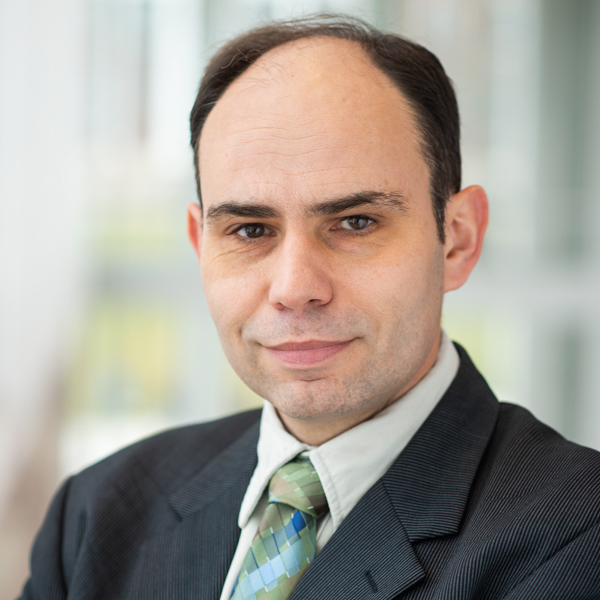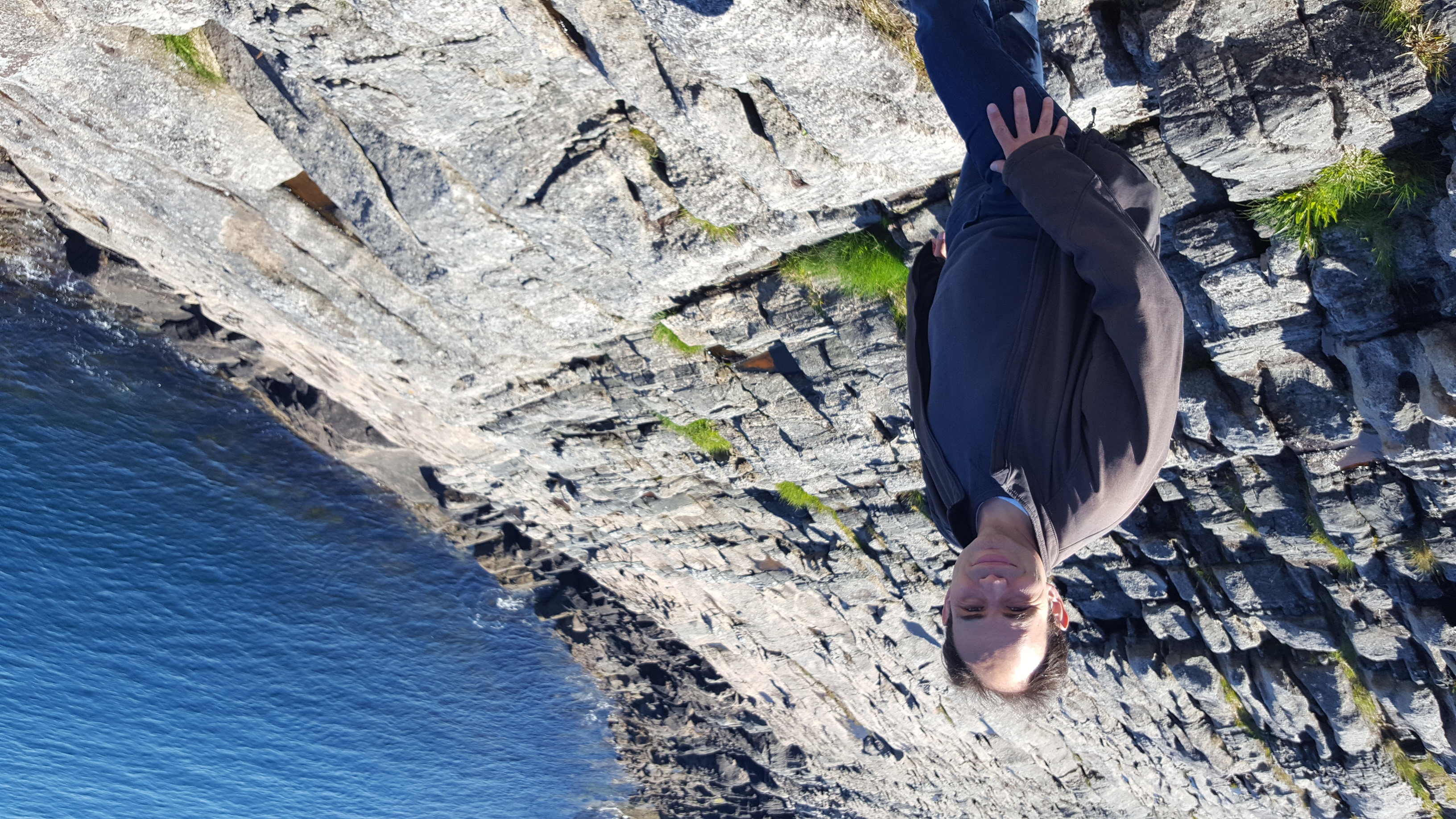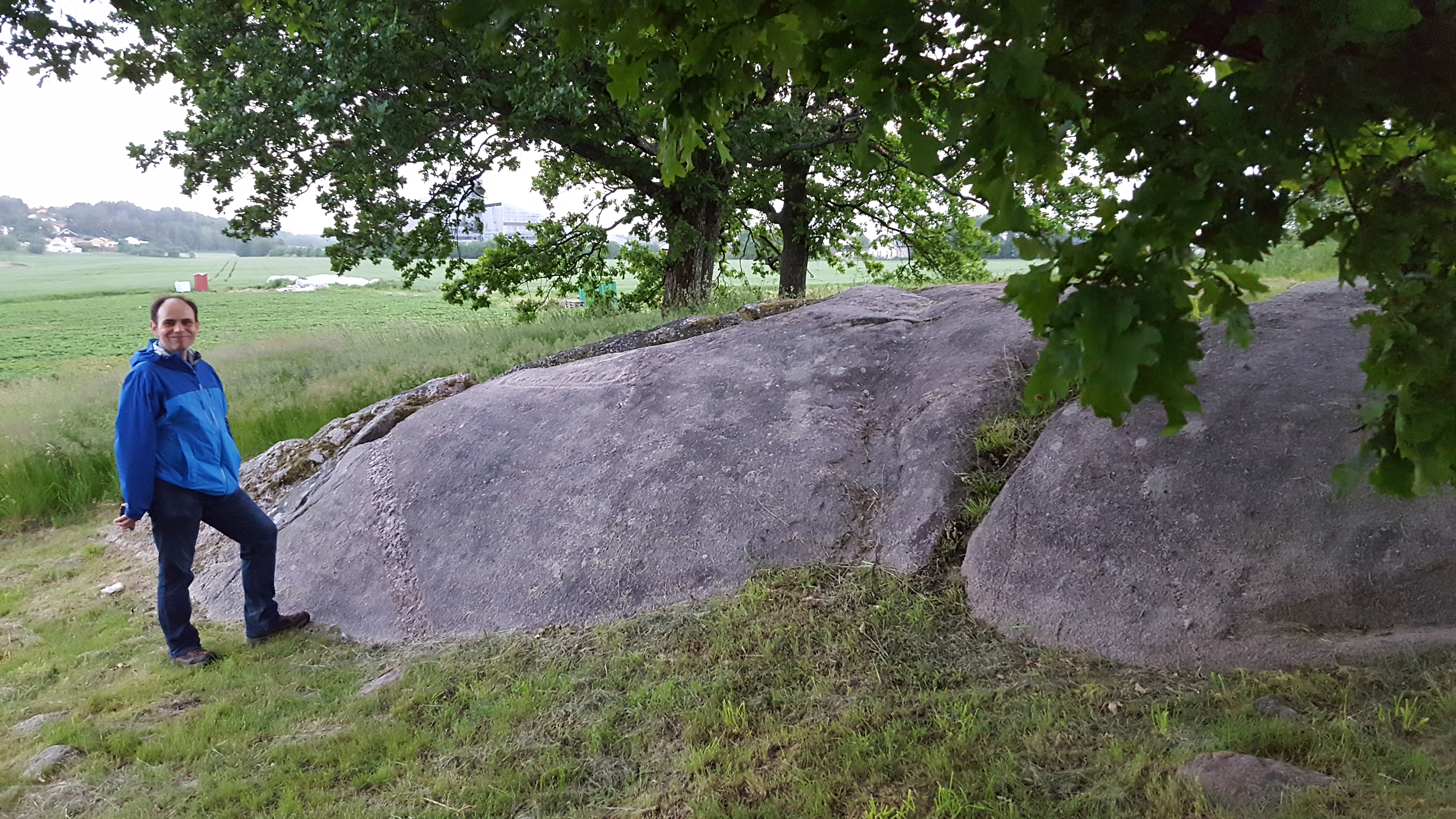Geology’s Laurent Montési Awarded Fulbright Scholarship to Study Tectonics in Norway
Montési hopes to apply his knowledge of Earth’s tectonic and volcanic activity to Venus and planets beyond.
University of Maryland Geology Professor Laurent Montési has been named a Fulbright U.S. Scholar for 2023-24. He will travel to Norway to study Earth’s deep mantle structures and collaborate with University of Oslo researchers specializing in this subject.

Fulbright Scholar Awards are prestigious and competitive fellowships that provide unique opportunities for scholars to teach and conduct research abroad. Fulbright Scholars also play a critical role in U.S. public diplomacy, establishing long-term relationships between people and nations.
Montési leads UMD’s Geodynamics Group, which develops theoretical models for processes that occur in Earth’s lithosphere, such as tectonic movements and volcanic features. Before joining the UMD faculty in 2007, Montési was a scientist at Woods Hole Oceanographic Institution for six years after earning his Ph.D. in geophysics from MIT.
In an interview with UMD’s College of Computer, Mathematical, and Natural Sciences, Montési shared his thoughts on his award and his plans for his sabbatical to Norway.
This interview has been edited for length and clarity.
Congratulations on being selected as a winner of the Fulbright U.S. Scholar Award! How meaningful is it to receive this award?
It is quite exciting but also very humbling! The list of Fulbright program alums is very impressive, so it is quite an honor to be associated with the program.
The last time I could apply for a sabbatical, I was unable to participate in the U.S. Scholars program initially because I was not yet an American citizen. I have since obtained US citizenship which allowed me to finally qualify. I appreciate how the Fulbright program considers diverse viewpoints and recognizes the value of my perspective as a naturalized American citizen.
Can you describe your research and how it might grow with this opportunity?
I focus on developing theoretical models of tectonic and volcanic activity on Earth and other planets. You can think of it as figuring out why there are mountains, earthquakes and volcanoes. It’s all theoretical work, much of it is computer-based.
Getting a Fulbright Scholarship lets me address a much riskier and more open-ended question than would be possible using typical funding opportunities. In this case, I will be studying what would happen if certain structures that exist deep in the Earth’s mantle were also present on Venus. How would it influence the overall geological activity of the planet? Can this explain some of the unique characteristics of the surface of Venus?

I have a few ideas about what may happen, but I need to spend some time building specific hypotheses before I can develop a concrete project for our traditional funding agencies. The scholarship gives me the time to do that and puts me in contact with colleagues with whom I can build the foundation for future projects that push this new research direction further.
Why did you choose Norway for your project?
First, there is a team in Oslo that comprises the most prominent experts in deep mantle structures. Interacting with them directly for the best part of a year is the best way to learn about this topic.
Second, I feel very attracted to Scandinavian cultures and landscapes, and I am happy that Fulbright programs value cultural exchanges. I think Norway has an unparalleled feeling of peace and quiet, while Oslo still offers all the cultural opportunities of a European capital. I love mountains and dark forests, which you can find everywhere in Norway. As a geology professor, I look forward to the opportunity of visiting some of the exceptional outcrops that exist in Norway.
I intend to deliver public lectures to introduce Norwegian people outside of the academic world to the kind of work we do and what we understand about how planets work. It is very important to me to reach out directly to the broader public rather than adding to or duplicating the courses already in place at the University of Oslo.
How will you prepare for your sabbatical?
There’s a lot of work to do before I leave. First, I need to get a visa, secure lodging, rent out my home here, etc.
Of course, I also need to communicate with my hosts to ensure I have an appropriate place to work and collaborate with them effectively. Outreach opportunities must be organized as soon as possible, as schedules are often planned months in advance.
I’ve also been learning the language. Although most Norwegians speak English perfectly, and English is the common language in the university, I feel I will be better able to connect with everyday people if I have some mastery of the language. I have been taking courses in the language spoken around Oslo, Bokmål, for several years. Nothing can replace immersion and direct interaction, but I am doing my best to be ready.
What do you look forward to most in Norway, both professionally and personally?
The interaction with my host institution will open up new research directions that will benefit my team at UMD for several years. Studies of Venus will only become more common as we prepare to launch several American and European spacecraft to that planet in the coming decade.
I will have an opportunity to gain first-hand knowledge of deep crust and upper mantle outcrops if I can follow some teams there. The key knowledge I hope to bring back is a more complete understanding of the deep structure of the Earth and how it impacts planetary evolution.
Personally, I look forward to a year in a different environment and having the opportunity to refresh myself. It is difficult to decouple the Fulbright Scholarship and my sabbatical leave. It is important to have the chance to pause and reset your mind and activities once in a while. Just being able to focus on a new research topic for a while will be very refreshing.

Ultimately, what impact do you aspire to make as a Fulbright Scholar?
The institution I will be joining, the University of Oslo, is highly respected and produces amazing research. It just started a new center on planetary habitability. I will strive to inspire the scientists there to include some of my expertise in their research plans, highlighting the value of comparing geological features between the Earth and other planets, especially Venus.
Besides that, I hope to inspire the general public to study the interiors of the Earth and other planets and appreciate the value of exploring the solar system. Norway has a rich culture of exploration, from the Viking times to 20th-century Arctic explorers. I hope to inspire Norwegians to step beyond this Earth and explore, physically and virtually, what other worlds are like.
Do you have any advice for colleagues and students who may be interested in applying for a Fulbright program opportunity?
The first thing is to realize that there are many Fulbright opportunities—excellent opportunities can be found all over the world. People should apply to any programs that fulfill their needs for learning and exploration.
Second, people should be confident of their worth and not be afraid of contacting host institutions to develop mutually beneficial projects. Fulbright focuses on scholarly and cultural exchange. Many of my colleagues and students have a lot to offer, but they may be shy about jumping into the world beyond the U.S. And finally, I want to remind people that traveling and exploring new places provides unparalleled enrichment.







